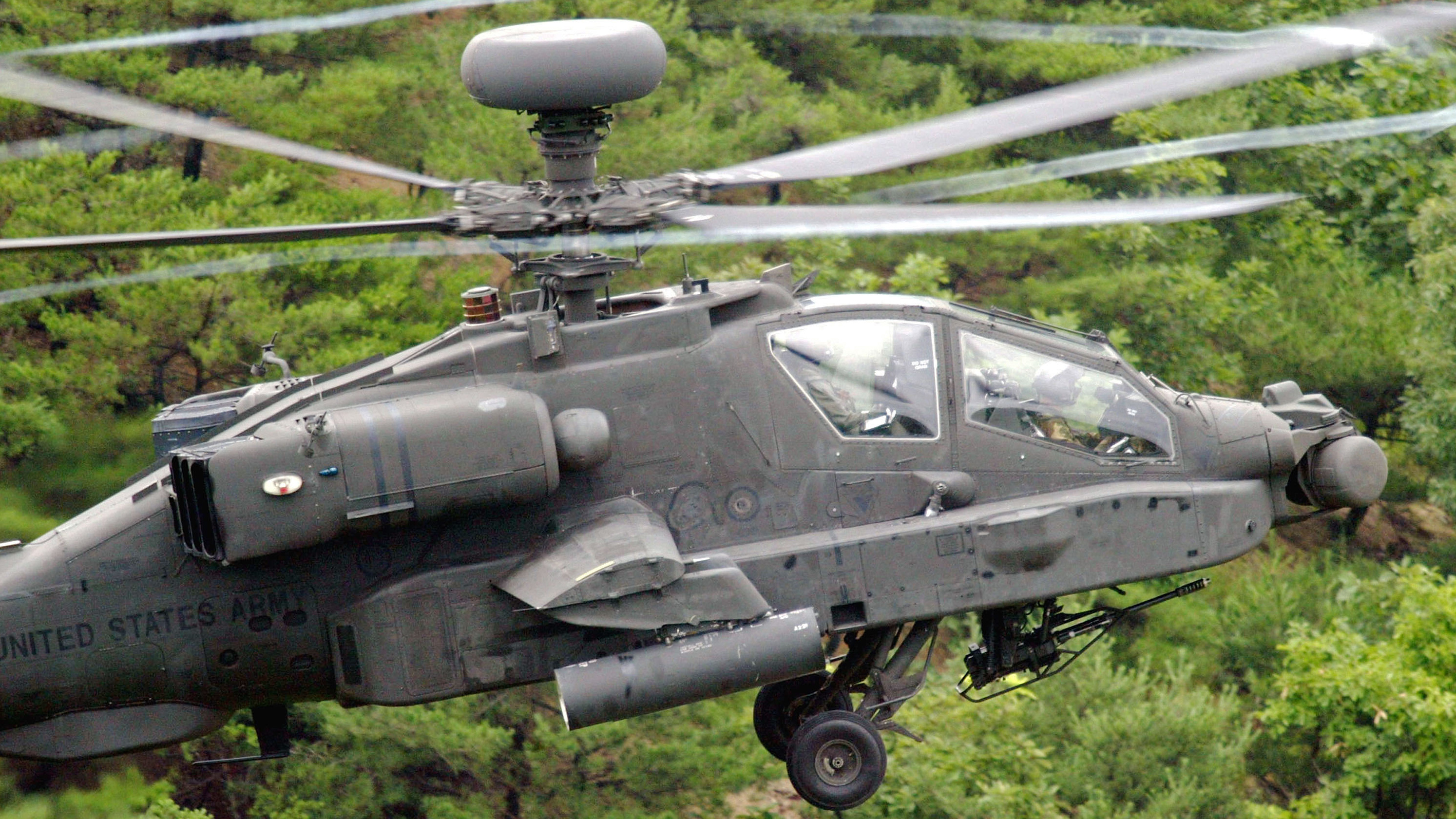The U.S. Army wants to test an active electronically scanned array (AESA) radar on its AH-64 Apache attack helicopter, using a standard Apache weapons pylon. A radar of this kind would be a very valuable tool for spotting, tracking, and engaging targets, especially in bad weather and at extended ranges, including airborne threats, but it would also be able to perform more general intelligence-gathering and provide improved situational awareness, along with other functions. If successful, the radar could find its way onto other Army platforms, both rotary and fixed-wing, the service has said.
A Request for Information (RFI) for the potential inflight demonstration of the radar on an AH-64 was published by the U.S. government recently. Specifically, the Project Manager for Apache Attack Helicopter is conducting market research into potential sources that could provide a suitable radar. Then, a demonstration would be conducted at Redstone Arsenal, Alabama, using the latest AH-64E V6 version.
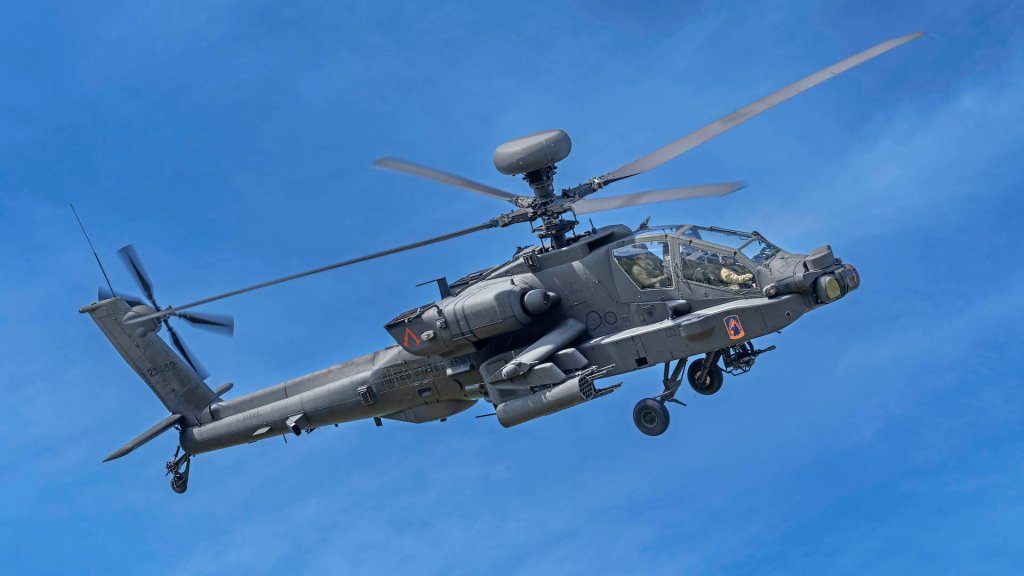
According to the RFI, a state-of-the-art AESA radar would have the potential to be tested across a wide variety of functions, with the desired capabilities including “fire control, pilotage, pilot aid in degraded visual environments (DVE), pole/tower and cable detection, airborne hazards, terrain following (TF), terrain avoidance (TA), and shoreline mapping using augmented reality (AR) techniques.”
It is not uncommon for an RFI like this to be open-ended to try to solicit a broad array of possible options for addressing a problem set and this one notes that the Army is also interested in potential radar solutions that can only provide some of the outlined capabilities.
Also, while the Apache is at the center of the program, at least as far as the inflight demonstration is concerned, the Army says it’s also looking at the potential to fit the same radar in the UH-60 Black Hawk and CH-47 Chinook helicopters, as well as the forthcoming Future Long-Range Assault Aircraft (FLRAA), which you can read more about here. The RFI also mentions the possibility of putting the radar on undisclosed fixed-wing Army aircraft.

Potentially, more than one vendor might end up being selected for an inflight demonstration of their system. Furthermore, the RFI states, the Army is also looking for responses from companies “not yet able to integrate [AESA radar] onto a surrogate aircraft” and these are encouraged to “highlight technical maturity limitations and other feasible demonstration capabilities.”
The trials should take place over a three-week period, culminating with a demonstration day.
As for the planned scope of the AH-64E V6 demonstration, this will see the AESA radar used to collect data against “relevant targets” at “various ranges.” Targets will be stationary and moving and will be on land (motorcycle, truck, and tank), in a littoral environment, and airborne (AH-64, MD530, T-6 Texan II, and undisclosed drones).
The proposed scenario for the inflight demonstration includes attack profiles for ground, air, and littoral targeting, a nap-of-the-earth (NOE) route for terrain mapping (TM), TF, and TA, a DVE landing profile to preview pilot-aided symbology, and an overwater route for shoreline/synthetic aperture radar (SAR) mapping.
Most fundamentally, an AESA radar differs from a more traditional radar in that it uses a matrix formed of hundreds of very small radar modules that are used to ‘steer’ an electronic beam, instead of the radar antenna physically moving to point at a target. This makes AESAs far more reliable than mechanically scanned types, and they can benefit from better range, fidelity, and resistance to electronic warfare, and can do multiple tasks, from sensing to electronic attack to communications. The beam in an AESA radar can be moved around and modulated much more quickly, which also allows the radar to conduct multiple tasks simultaneously. In the Army demonstration, for example, this might involve surveilling a battlefield for targets on the ground and in the air, as well as monitoring weather along the AH-64’s flight path.
The inclusion of drone targets in the test campaign is interesting, as this is a growing area of interest for the Army and the AH-64 community in particular.
As we have discussed before, Army AH-64s are now practicing to refine their ability to detect and destroy enemy aerial drones, including while forward deployed to the Middle East. At the same time, AESA radars offer notable advantages over legacy radars when it comes to detecting one-way attack munitions and other smaller ‘kamikaze drones.’ Above all, AESA radars are typically able to spot objects of interest, even small ones and those with low radar cross-sections, faster and farther away.
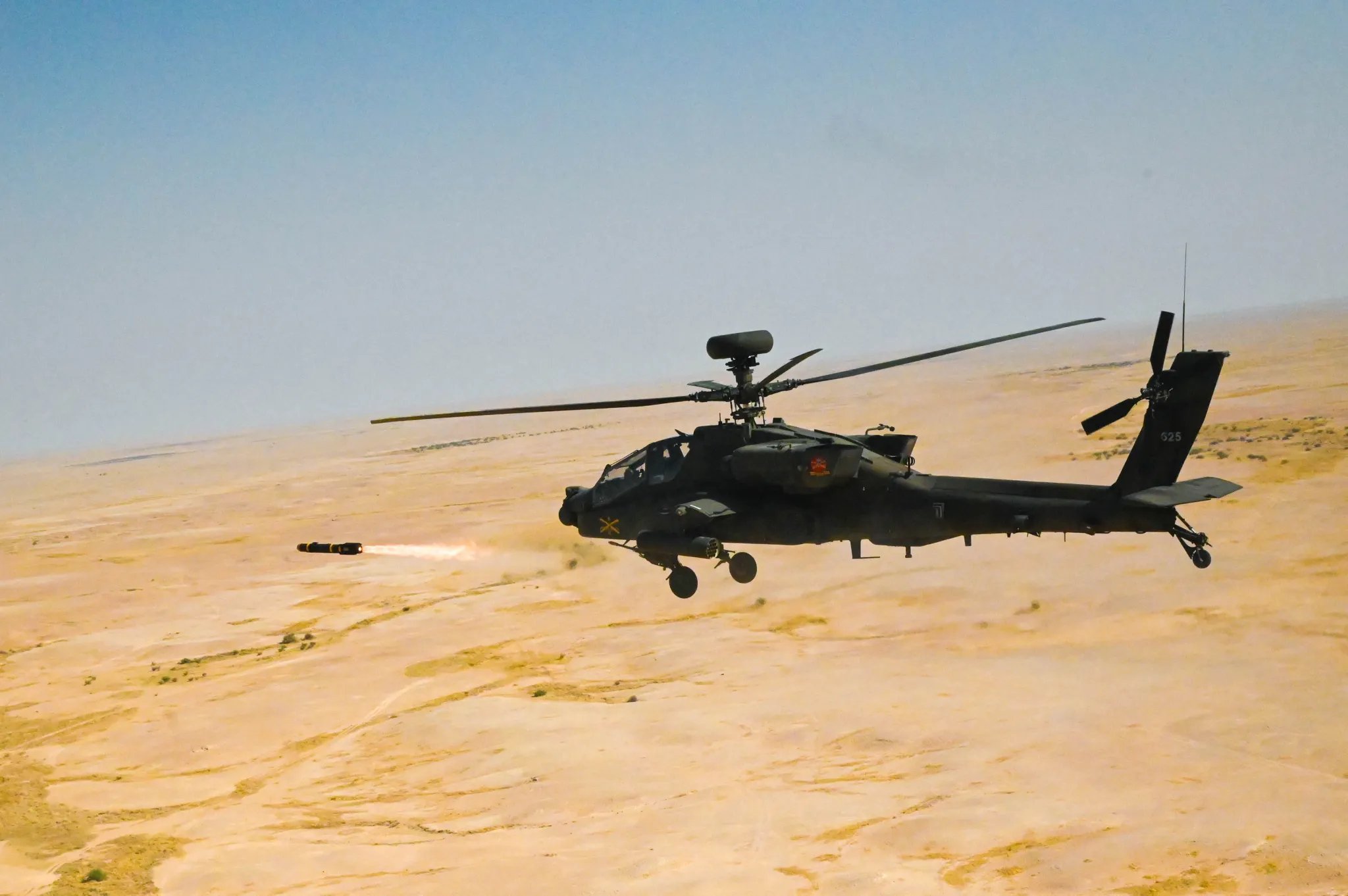
The U.S. Army’s decision to test an AESA radar on the AH-64 is also interesting in light of plans to modernize this design, something that Boeing discussed at length with TWZ only recently.
While an AESA radar was not specifically mentioned, there is an ambition to move the AH-64’s current Longbow fire-control radar from its mast-mounted position and integrate it into the fuselage, to bring aerodynamic improvements.
As we observed at the time, one way of installing a radar internally could be to use a conformal AESA array, a technology that is getting ever smaller and more versatile.

Now, however, the Army is looking at what could potentially be a simpler solution — mounting an AESA radar externally, under one of the AH-64’s stub wings. On the other hand, such an installation would take away valuable space and weight that would otherwise be used for weapons, external fuel, or other stores.
The latest versions of the AH-64 also have major advantages when it comes to installing a radar of this kind, thanks to its open architecture that makes ‘bolting on’ systems like this a far easier and quicker process. Another big advantage lies in the AH-64’s datalink system, which means a single AESA-equipped Apache could provide targeting to a formation of the same type or other platforms.
While AESA radars are rarely found on helicopters — other than a handful of specific airborne early warning types — it’s notable that Russia has also been working to include this kind of technology on its Ka-52 Hokum attack helicopter.
The naval Ka-52K version has been fitted with a Rezets AESA radar, while the land-based Ka-52M is expected to receive a new AESA radar, likely the V006 Rezets from the Zaslon company. This is an X-band radar that, according to the manufacturer, can detect a group of tanks from 25 miles and a fighter aircraft from up to 31 miles.
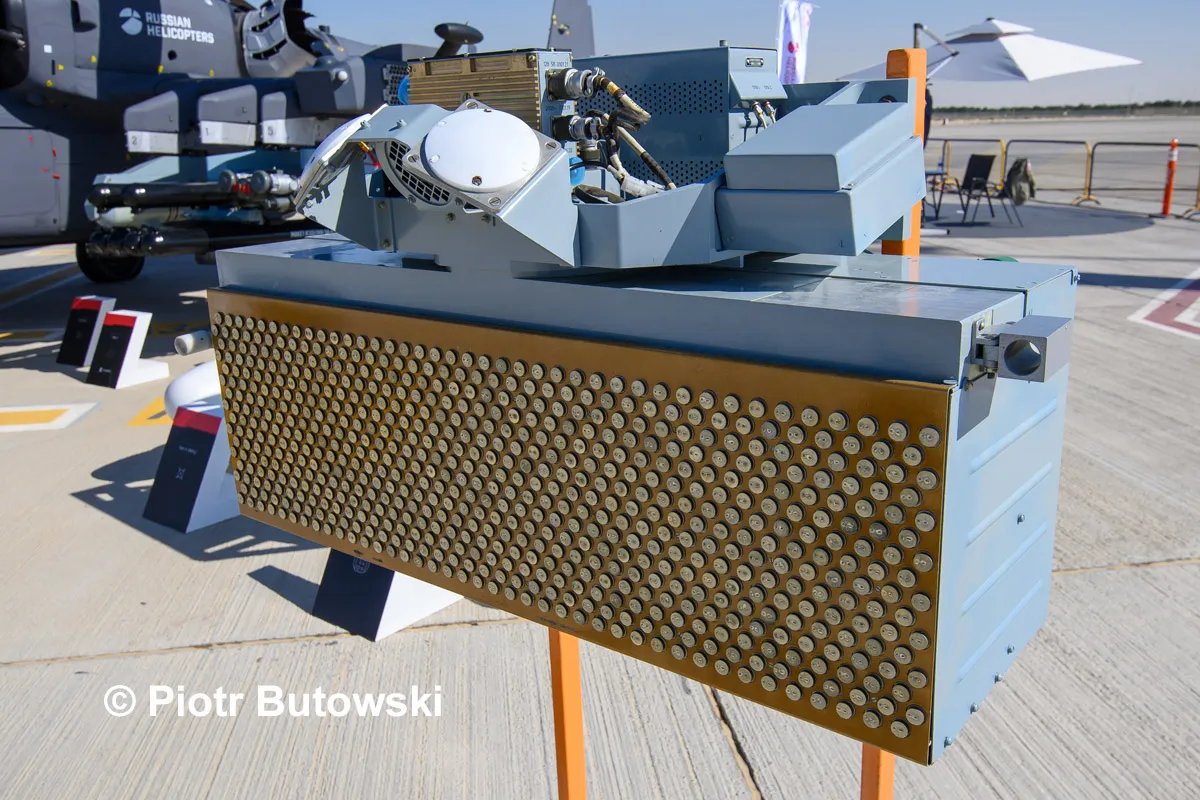
Other Russian AESA options for attack helicopters exist, too, notably the FH02 from Phazotron-NIIR, which actually combines two separate antennas: a mechanical slotted array for the Ka and an AESA for the X-band. According to the company, a tank can be detected at a distance of 12.4 miles in the Ka range or 21.8 miles in the X range.
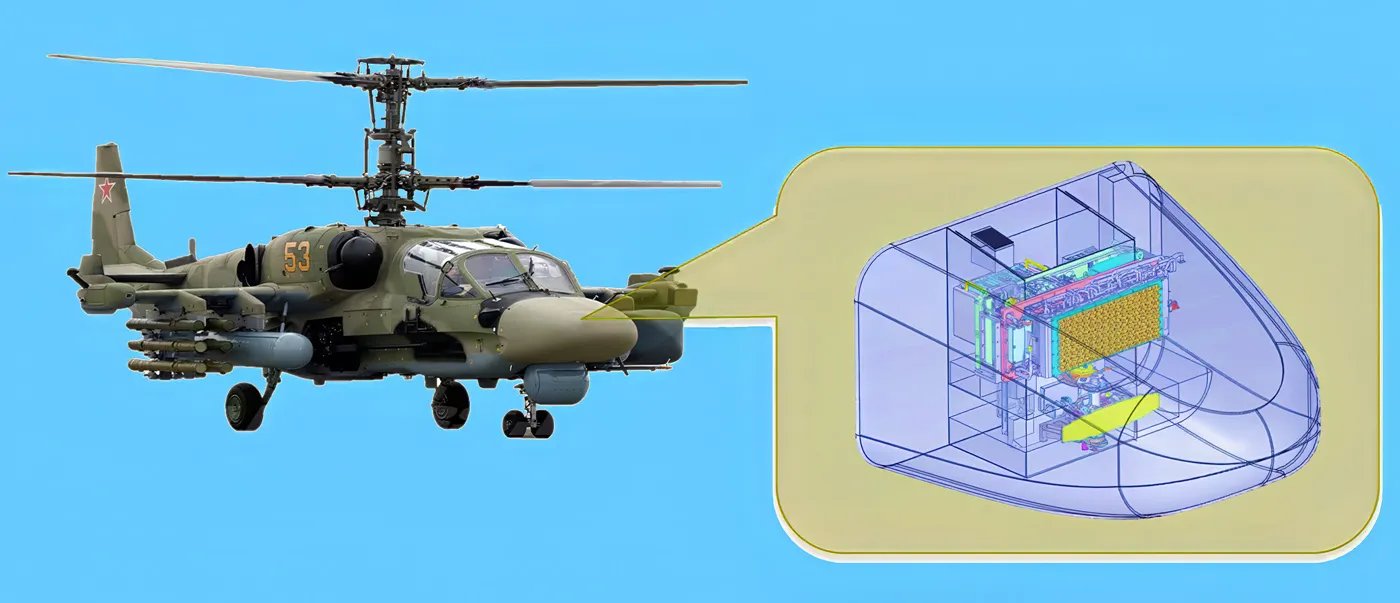
In terms of existing Western-made AESA radars that are optimized for helicopters, the European company Leonardo offers the Osprey 30 that has already been installed on the U.S. Navy MQ-8C Fire Scout rotary-wing drone (where it is designated AN/ZPY-8) as well as the Norwegian version of the Leonardo AW101 helicopter.

In particular, the Osprey 30 is compact enough that it can be fitted in an installation with no rotating antenna but still provides 360-degree coverage, using up to four separate fixed antennas. Its small size and the fact that the U.S. military already uses it could make the Osprey radar an attractive option for the U.S. Army AH-64 demonstration.
Small-sized AESA radars are also something that the Army has been testing on some of its fixed-wing aircraft, including Northrop’s AN/ZPY-5 Vehicle and Dismount Exploitation Radar (VADER), fitted in a pod on the Enhanced Medium Altitude Reconnaissance and Surveillance System (EMARSS), which is based on a Beechcraft King Air 350, and which you can read more about here.
For now, we don’t know what options might be pitched for the AESA demonstration, but it’s certainly significant that four decades after the AH-64 first entered service, the Army is now looking seriously at introducing a new type of radar that promises to add major new capabilities in a variety of environments, for both targeting and navigation functions.
Contact the author: thomas@thewarzone.com
